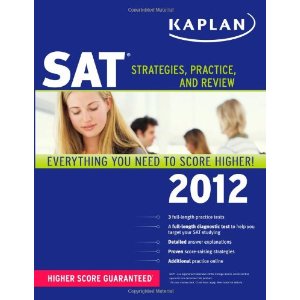 I was helping a student study for the SAT mathematical questions the other day. He has a prep book with concepts and practice questions. And the answers are available to check out if you flip back to a later page.
I was helping a student study for the SAT mathematical questions the other day. He has a prep book with concepts and practice questions. And the answers are available to check out if you flip back to a later page.
That means you can check instantly whether you have the correct answer or not.
If you use this option the right way, it can help, but it can also prevent you from really learning something.
The right way would be to try a math problem, attempt one method and if that didn’t work to try a few other methods. Then you would attain an answer, check it if possible and think about whether it seems reasonable. If you’re obtaining the height of a person, two centimeters wouldn’t be reasonable.
The wrong way would be to look at a problem for two seconds, exclaim that you do not know how to solve it and then flip back to the answer and look puzzled at how they got it then examine the solution steps to see what they’re doing.
When you look at a solution and have some idea of what’s going on, the solution is probably going to make sense. You might feel like you understand it even, but if you hadn’t looked at the solutions it would have taken you much longer to figure it out if you could.
The thing is, that longer time and the struggle enables you to learn things better.
You’re far more likely to remember something if you struggle while learning. With one student I went over a problem with him, finding the height of a triangle inscribed in a parabola. He looked at the problem, unsure of where to start, so I helped him with some steps. It was a somewhat complicated problem. Then three days later we encountered the exact same problem. Not a similar problem. The same problem.
He wasn’t sure how to solve it or even get started even though we had done the problem before. I had the steps to the problem with me that I had written out three days prior. He saw the solution and it made sense on the previous day, but when he encountered the same problem again, he wasn’t able to figure it out without more help.
I thought about the process of how this happened. Ideally, you want to try something, anything when you encounter a problem.
If you’re learning music on saxophone and want to play it. Try playing a note that you think you hear. You might be off by two octaves. But once you play it, you should hear a difference. Then if you play a second note, it ought to be closer using what you have learned. If you try to instantly guess what the note is and have no experience learning music by ear, you might feel overwhelmed and not even try to play a note, simply giving up.
Looking at the sheet music will give you the answer instantly all at once. If you were working with a saxophone teacher, he or she could probably give you the first note and then let you work from there. It would give you a starting point. And if you got off track, you might learn from the teacher where exactly you got off track.
Check out the lesson where you can check yourself by scrolling, Ear Training lesson for It Don’t Mean a Thing



I see what you did there. 🙂 lol.